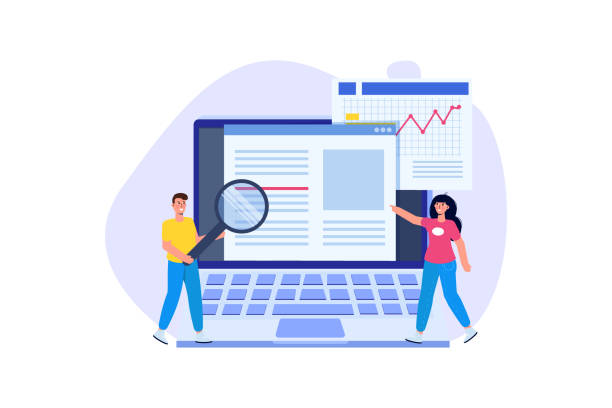Introduction to the Importance of Site Speed

In today’s digital world, where every second matters to users and search engines, website loading speed has become one of the most crucial factors for online success.
One can no longer expect success with slow-loading websites.
The concept of fast website design is more than a competitive advantage; it’s a necessity.
This not only directly impacts user experience (User Experience – UX) but is also a significant factor in website ranking in Google search results.
Today’s users are more impatient than ever and will immediately leave a site if there’s a delay, leading to an increased bounce rate (Bounce Rate) and decreased engagement.
From the perspective of search engines, especially Google, site speed is a key ranking signal.
Faster websites have a higher potential to achieve better rankings, meaning they will attract more organic traffic.
In fact, investing in website speed optimization is an investment in the future of your online business.
This section is an explanatory and educational guide for understanding the basic concept.
In another chapter, we will delve deeper into the impact of speed on user experience, but know this much: any loading slowness can mean losing potential customers and decreased revenue.
The importance of this issue is such that many companies allocate significant resources to it to ensure their website loads in the shortest possible time.
Did you know that poor online store design can scare away up to 70% of your potential customers? Rasaweb transforms your sales with professional and user-friendly e-commerce website designs.
✅ Significant increase in sales and revenue
✅ Full optimization for search engines and mobile
⚡ [Get free consultation from Rasaweb]
Factors Affecting Site Load Speed

To achieve fast website design, understanding the factors influencing loading speed is essential.
These factors are technical in nature and require a specialized approach for optimization.
One of the most important factors is the size of images and media.
High-quality and unoptimized images can significantly reduce loading speed.
Another is the size of HTML, CSS, and JavaScript code.
Excessive, repetitive, or unoptimized code forces the browser to spend more time processing and rendering the page.
Using heavy JavaScript frameworks and libraries without real necessity can become a major obstacle to speed.
Another factor is the quality and type of web hosting.
A slow server or one with limited resources can lead to slow loading, even if your website is perfectly optimized.
The geographical distance of the server from users also affects speed; the shorter the distance, the faster the data transfer.
Plugins and extensions used can also be a determining factor.
Some plugins, especially in content management systems like WordPress, add heavy code to the site and can significantly reduce speed.
Using a CDN (Content Delivery Network) is also an effective solution for content distribution and reducing loading time for users in different parts of the world.
These issues require an analytical and precise approach to identify and resolve bottlenecks.
A fast-loading website is the result of comprehensive optimization of all these factors.
Optimizing Images and Media for Greater Speed
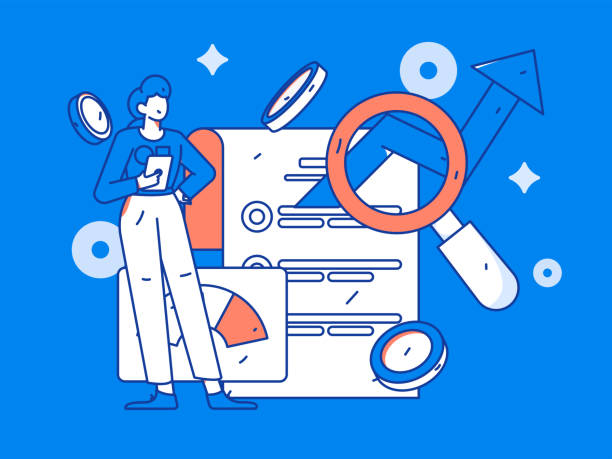
In the discussion of fast website design, optimizing images and other multimedia files is of paramount importance.
Images often constitute a significant portion of a web page’s total size and can heavily impact loading time.
The first step in this path is choosing the correct image format.
For photos, JPEG and WebP are usually the best options, while for simple graphics or logos, PNG or SVG are recommended.
The WebP format, developed by Google, offers much better compression while maintaining quality, and its use is highly recommended.
The next step is image compression.
Numerous online tools and desktop software like TinyPNG, Compressor.io, or built-in CMS tools can significantly reduce image size without a noticeable loss in quality.
Also, resizing images to the exact dimensions needed on the web page prevents loading images larger than necessary.
For example, if your image is displayed on the website with a width of 800 pixels, there’s no need to upload an image with a width of 2000 pixels.
Furthermore, using the “Lazy Load” (lazy loading) feature for images is very important.
This technique ensures images only load when the user scrolls to the relevant section of the page.
This significantly improves initial loading speed, especially on long pages with many images.
Also, adding height and width to <img> tags in HTML prevents layout shifts (Layout Shifts) and provides a better user experience.
These guidance and educational strategies can help you on the path to having a fast-loading website.
| Format | Main Use | Advantages | Potential Disadvantages |
|---|---|---|---|
| JPEG/JPG | Real photos, images with many details | High compression, small size | Quality loss with excessive compression, no transparency support |
| PNG | Simple graphics, logos, images with transparency | Transparency support, high quality | Larger size compared to JPEG for photos |
| SVG | Icons, logos, vector graphics | High scalability without quality loss, very small size | Not suitable for complex images and photos |
| WebP | Alternative to JPEG and PNG for photos and images with transparency | Excellent compression, transparency support | Browser support was less in the past (widespread today) |
The Role of Optimized Coding in Fast Website Design
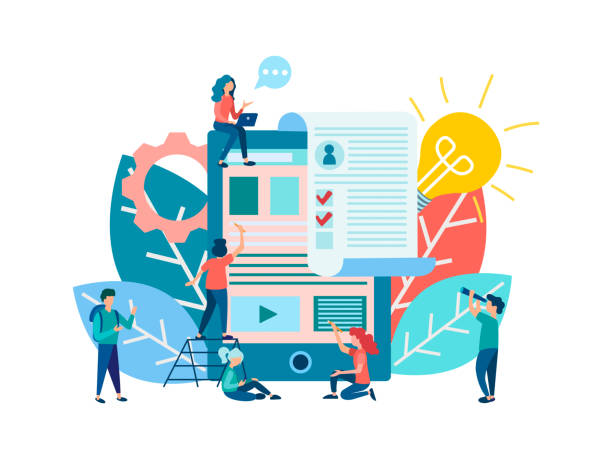
One of the main pillars of fast website design is optimized and clean coding.
Cluttered, repetitive, or unnecessary code can significantly increase page loading time.
This includes optimizing HTML, CSS, and JavaScript.
In HTML, correct use of semantic tags and structure helps the browser process the page faster and more efficiently.
Avoiding nested and unnecessary tags and reducing DOM (Document Object Model) depth is also important.
Regarding CSS, minification and compression of CSS files are essential to reduce their size.
Additionally, using Inline CSS (Inline CSS) and Internal CSS (Internal CSS) reduces HTTP requests, but they should be used carefully and only for essential and small styles to avoid code complexity.
The best approach is to use external CSS files that are compressed and cached by the browser.
Also, removing unused CSS can drastically reduce file sizes.
But perhaps the most important part of coding for speed is JavaScript optimization.
JavaScript files are often the heaviest resources on a web page and can block the page rendering process.
Using the defer or async attributes in <script> tags allows the browser to process HTML before fully loading JavaScript.
Optimizing code logic, reducing the number of API requests, and using a CDN for external JavaScript files are also highly recommended.
These specialized and analytical topics require technical knowledge to ensure your website has maximum speed.
Website speed optimization is achieved only by paying attention to these details.
Are you worried about losing customers because you don’t have a professional e-commerce site?
With e-commerce website design by Rasaweb, forget these worries!
✅ Significant increase in sales and visitor-to-customer conversion rate
✅ Professional and user-friendly design that builds customer trust
⚡ Get free consultation from Rasaweb
Choosing the Right Host and CDN for Better Performance

Choosing the right web host (hosting) and using a Content Delivery Network (CDN) are two other critical factors in achieving fast website design.
Your hosting is essentially where all your website’s files and data are stored, and its quality directly impacts loading speed for users.
A high-quality host provides sufficient resources (CPU, RAM, bandwidth) for your website and can handle high traffic without slowdowns.
There are various types of hosting, including shared hosting, VPS (Virtual Private Server), dedicated server, and cloud hosting, each with its own advantages and disadvantages, and should be chosen based on needs and budget.
The geographical location of the server is also important.
If most of your audience is in Iran, choosing a host with domestic servers or in neighboring countries can significantly increase access speed.
However, for websites with a global audience, using a CDN is a very effective solution.
A CDN is a network of servers distributed globally that stores cached versions of your website’s content (such as images, CSS, JavaScript) on the server closest to the user.
When a user visits your website, content is delivered to them from the nearest CDN server, which significantly reduces physical distance and data transfer time, leading to high web speed.
This is specialized guidance; CDNs like Cloudflare or Akamai not only increase speed but also improve website security.
Choosing a reliable host and using a CDN not only helps with loading speed but also ensures the stability and availability of your website.
Consequently, for a fast website design, attention to these two aspects is crucial.
The Impact of Plugins and Scripts on Site Speed

On platforms like WordPress, using plugins and external scripts to add various functionalities to a website is very common.
However, it should be noted that each additional plugin or script can add to the overall code size and the number of HTTP requests, thereby negatively impacting high web speed.
A poorly coded plugin or one that performs complex tasks can overconsume server resources and drastically reduce loading speed.
To manage this challenge, you should first have a precise analysis of installed plugins.
Prepare a list of all active plugins and check if you truly need all of them.
Delete unnecessary plugins, as even deactivating them might leave some files on the server.
When choosing a new plugin, pay attention to its reputation, regular updates, and user reviews regarding its performance and impact on speed.
In general, the fewer plugins there are, and the lighter and more optimized the existing plugins are, the faster your website will be.
External scripts, such as Google Analytics tracking codes, advertising codes, or social media scripts, can also affect speed.
Try to minimize the number of these scripts, and if possible, load them asynchronously or defer them so they do not block the page rendering process.
This is an explanatory and specialized point, adherence to which is crucial for having a fast website design.
Always remember that every extra line of code can increase your site’s loading time.
Website Speed Measurement Tools and Result Interpretation
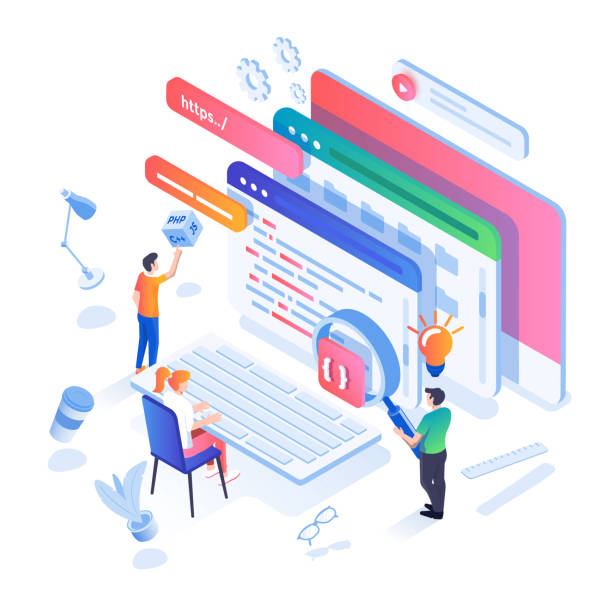
After applying various optimizations to achieve fast website design, continuous measurement and monitoring of website speed are very important.
There are free and powerful tools that help you evaluate your site’s performance and identify bottlenecks.
Among the most important of these tools are Google PageSpeed Insights, GTmetrix, and Lighthouse (also available in Chrome’s developer tools).
Each of these tools provides various metrics for speed evaluation, including:
- First Contentful Paint (FCP): The time when the first part of the page content becomes visible.
- Largest Contentful Paint (LCP): The time when the largest content element of the page loads and becomes visible.
(One of the Core Web Vitals) - Cumulative Layout Shift (CLS): Measures the visual stability of the page (one of the Core Web Vitals).
- Total Blocking Time (TBT): The total time between FCP and Time to Interactive (TTI) which indicates the responsiveness of the page.
- Speed Index: Indicates the visual speed of page content loading.
- Time to Interactive (TTI): The time when the page becomes fully interactive.
Interpreting the results of these tools is also important.
They not only provide an overall score but also offer suggestions for improvement, including image optimization, minifying CSS and JS files, using browser caching, eliminating render-blocking resources, and faster server response.
Understanding and implementing these suggestions requires an educational and analytical approach.
As a guideline, your main goal should be to achieve green scores and continuously improve Core Web Vitals so that fast website design is realized and your SEO ranking also improves.
| Metric | Description | Importance (UX/SEO) | Goal (Lighthouse Report) |
|---|---|---|---|
| First Contentful Paint (FCP) | Time to display the first visual content | Initial indicator of perceived speed | Under 1.8 seconds |
| Largest Contentful Paint (LCP) | Time to display the largest content element | Important for UX and SEO (Core Web Vital) | Under 2.5 seconds |
| Cumulative Layout Shift (CLS) | Measurement of page visual stability | Important for UX and SEO (Core Web Vital) | Under 0.1 |
| Time to Interactive (TTI) | Time for the page to become fully interactive | Indicator of page readiness for user interaction | Under 3.8 seconds |
| Speed Index | Visual speed of content display | Indicator of overall visual loading speed | Under 3.4 seconds |
User Experience and Site Speed: A Crucial Relationship
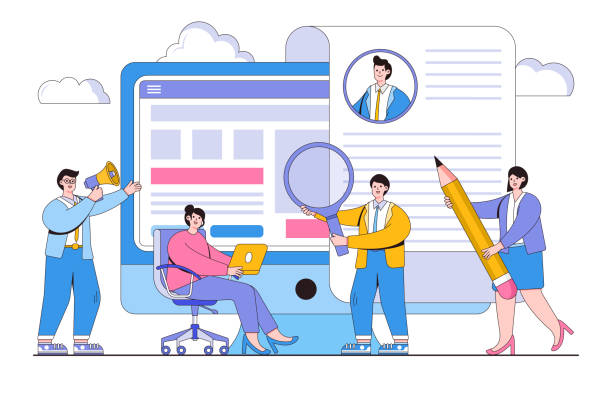
As previously mentioned, site speed is vital not only for search engines but also for user experience (UX).
The relationship between user experience and high web speed is a reciprocal and powerful one.
Users expect websites to load instantly.
Studies have shown that even small delays (e.g., one second) in loading time can lead to an increased bounce rate (Bounce Rate) and decreased user satisfaction.
Suppose a user is in a hurry to buy a product and enters your site; if the product page loads slowly, they are likely to leave the site and go to a competitor with faster speed.
This is a thought-provoking piece of content as to why some businesses are still oblivious to this crucial aspect.
Fast website design also directly impacts the conversion rate (Conversion Rate).
A faster site makes the process of purchasing, filling out forms, or registering smoother for the user, which in turn leads to increased sales or achieving website goals.
Furthermore, speed affects customer loyalty.
When users have a good experience interacting with your site, their likelihood of returning and becoming permanent customers increases.
This topic can be an entertaining part of competitor analysis for many businesses, as they can see how their site’s speed can differentiate them from rivals.
Ultimately, speed is not just a technical feature but a crucial analytical factor in your overall online business strategy that should not be overlooked.
Is your e-commerce site ready to attract maximum customers and achieve more sales? Rasaweb transforms your online business with modern and efficient e-commerce website designs.
✅ Increased speed and improved SEO
✅ Excellent user experience on mobile and desktop⚡ Get a free e-commerce website design consultation from Rasaweb!
Case Study of Successful Fast Website Design

To better understand the importance of fast website design, we can look at several successful cases in this field.
Companies that have invested in optimizing their website speeds have seen remarkable results.
For instance, a news study from Google showed that reducing Amazon’s site loading time by just 0.1 seconds led to a 1% increase in its revenue.
This is a powerful example of the financial impact of speed.
Websites like Wikipedia or large news websites typically have highly optimized designs that, despite a large volume of content, maintain acceptable loading speeds.
They utilize optimized images, minimal render-blocking JavaScript, and powerful CDNs.
Websites built with lightweight frameworks like Gatsby.js or Next.js are often prime examples of website speed optimization.
These frameworks deliver web pages much faster to the user by employing techniques such as Server-Side Rendering (SSR) or Static Site Generation (SSG).
These sites usually achieve high scores in speed measurement tools and provide an unparalleled user experience.
The technical point here is that success in fast website design requires not just one or two tricks, but a comprehensive and holistic approach that starts from the initial design and development process and includes selecting appropriate technology, optimized coding, content optimization, and choosing a robust infrastructure.
These case studies prove that speed is not just a feature, but a sustainable competitive advantage.
The Future of Fast Website Design and New Trends
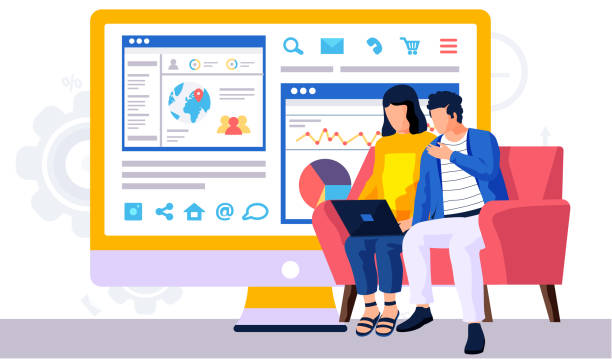
The future of fast website design is constantly evolving, with new trends emerging that aim to provide an even faster and smoother experience for users.
One of the most important trends is the increasing focus on Google’s Core Web Vitals, which include metrics like LCP, FID (First Input Delay), and CLS.
These metrics directly influence website rankings in search results and encourage developers to pay more attention to the performance aspects of websites.
Other trends include the wider adoption of Progressive Web Apps (PWAs), which bring mobile app capabilities to the web and provide offline access and faster loading.
Additionally, the increasing specialization of server-side technologies like Serverless Functions and Edge Computing also helps reduce latency and improve overall speed, as computations and content delivery are moved closer to the user.
AMP (Accelerated Mobile Pages) technology is also continually evolving and is designed to provide an instant experience on mobile, although its popularity has slightly decreased in recent years.
The importance of high web speed will continue in the future, and with increasing internet speeds (like 5G) and the new complexities of websites, the need for deeper and more creative optimizations to maintain and improve performance is felt more than ever.
This is an analytical and news-oriented look at the path that fast website design is on, showing that this field will never be static.
Frequently Asked Questions
| Question | Answer |
|---|---|
| What is fast website design? | The process of building a website that loads quickly and provides a smooth user experience. |
| Why is website speed important? | Improved user experience, reduced bounce rate, increased conversion rates, and better ranking in search engines (SEO). |
| What factors affect website speed? | Image size, number of HTTP requests, code optimization (HTML, CSS, JS), host speed, and browser caching. |
| How can website speed be improved? | Optimizing images, compressing files, using caching, choosing suitable hosting, and reducing unnecessary plugins. |
| How do images affect website speed? | High-volume images or inappropriate formats can significantly increase page load time. |
| What is the role of JavaScript and CSS in website speed? | Unoptimized code, high volume, or blocking execution can reduce page rendering speed. |
| How much does hosting affect website speed? | The speed and quality of the hosting server directly impact website response time and initial loading speed. |
| What tools are available to check website speed? | Google PageSpeed Insights, GTmetrix, Pingdom Tools are common tools. |
| What are the benefits of a fast website? | Greater user satisfaction, reduced bounce rate, increased time on site, and improved ranking in Google results (SEO). |
| What are common mistakes that slow down website speed? | Using unoptimized images, bulky and messy coding, excessive use of plugins, and not using caching. |
And other services of Rasaweb Advertising Agency in the field of advertising
Smart Digital Branding: A dedicated service for growth in customer acquisition based on real data.
Smart UI/UX: An effective tool for improving SEO ranking with the help of real data.
Smart Custom Software: Professional optimization for increasing site traffic using Google Ads management.
Smart Custom Software: Designed for businesses seeking to increase sales through marketing automation.
Smart Brand Identity: Revolutionize click-through rates with intelligent data analysis.
And over a hundred other services in the field of internet advertising, advertising consultation, and organizational solutions.
Internet Advertising | Advertising Strategy | Advertorials
Resources
- Google PageSpeed Insights Tool: https://developers.google.com/speed/pagespeed/insights/
- Guide to increasing website speed: https://www.wpbeginner.com/wordpress-performance/
- Importance of site speed in SEO: https://moz.com/blog/page-speed-seo
- Core Web Vitals Principles and Web Speed: https://web.dev/fast/
✅
? To elevate your business in the digital space, Rasaweb Afarin Digital Marketing Agency is your trusted partner. With our services, from responsive website design to SEO optimization and social media management, your path to success will be smoother.
📍 Tehran, Mirdamad Street, next to Bank Markazi, Southern Kazeroon Alley, Ramin Alley, No. 6

